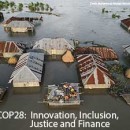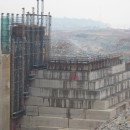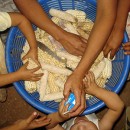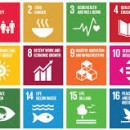Languages
Thursday, April 25, 2024
News and Views from the Global South

Sharing Indigenous Knowledge from All Ends of the Globe
This city in northern Australia brought them together to share their experiences this week. They are indigenous Shipiba people fighting indiscriminate logging in Peru’s Amazon jungle region and delegates from the Ando-Kpomey community in Togo, which created and protects a 100-hectare forest.
Guardians of the Land and Sea Meet in Darwin
“Are you a park ranger?” IPS asked. “No, I am one of the owners of the territory,” Ángel Durán responded in a firm voice. The Bolivian indigenous leader is in this northern Australian city along with 1,200 other native delegates from over 50 countries for the World Indigenous Network (WIN) conference.
PERU: Stepping Up Protection for Native Groups in Voluntary Isolation
In the dense Amazon rainforest of Peru, there are five reserves inhabited by indigenous groups who have chosen to remain totally or partially isolated from the rest of society. But these areas are not officially demarcated as indigenous lands, and only one is protected with a control post.
PERU: Stepping Up Protection for Indigenous Groups in Voluntary Isolation
In the dense Amazon rainforest of Peru, there are five reserves inhabited by indigenous groups who have chosen to remain totally or partially isolated from the rest of society. But these areas are not officially demarcated as indigenous lands, and only one is protected with a control post.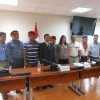
Native Peoples Say: No Consultations, No Concessions
Representatives of native communities in the Amazon region of Peru, where the first ever "prior consultation" about a project affecting their territory will be held, have pressured the authorities into promising that their views will be taken into account every step of the way. But the government's word is no longer enough to assuage their mistrust.
Investments Go Green in Peru
Peru’s economic growth is largely dependent on its wealth of natural resources, which provide over 50 percent of the country’s gross domestic product (GDP) and 80 percent of exports. In view of this fact, the government is developing a project for the valuation and protection of this natural bounty.
Amazon Regional Alliance to Confront the Climate Emergency
“When someone in Peru sneezes, someone in Brazil catches a cold. When a barrel of oil is produced in Ecuador, a neighbouring country ends up buying it,” says prominent environmentalist Yolanda Kakabadse.
Native Communities in Peru Take Charge of Environmental Monitoring
At the end of every month, with the skill of an environmental engineer, Wilson Sandi prepares a work plan that will be used by Achuar indigenous people, like him, to document the scars left by 40 years of oil drilling in the Peruvian Amazon region of Loreto.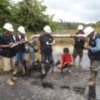
Peruvian Indigenous Communities Take Charge of Environmental Monitoring
They work with the precision of technicians and the enthusiasm of volunteers. They are indigenous inspectors documenting the damages caused by oil industry activity in three river basins in the Peruvian Amazon region.
Communal Land Titling at a Standstill in Peru
The titling of the lands of indigenous and peasant communities has been at a practical standstill for two years, with many of the corresponding files lost or incomplete. But the promotion of foreign investment is moving full steam ahead in the same regions.
Indigenous Consultations in Peru to Debut in Amazon Oil Region
Peru will debut a new mechanism for prior consultation with indigenous peoples by seeking their approval for a new stage of oil drilling operations in the infamous Lot 1AB in the northeastern Amazon region of Loreto.
Peru Identifies Civil War Victims – at Snail’s Pace
Of the 69,000 people killed during the 1980-2000 armed conflict in Peru, at least 16,000 were buried in secret unmarked graves. So far, only 2,064 of these bodies have been recovered, and just 50 percent have been identified, according to a new report.
Peru Working to Reform Environmental Impact Assessment System
A random review by the Peruvian government of 205 environmental impact assessments approved between 2001 and 2010 revealed that 86 percent lacked complete information on how they had received the green light from the authorities.
PERU: Anti-Mining Protesters Shot Amid Climate of Fear
In under two days, five demonstrators were gunned down by security forces in the northern Peruvian highlands region of Cajamarca, where a state of emergency has been declared.
Mining Industry’s Attempts at Transparency Falling Short in Peru
Peru was certified as compliant with the global standard of the Extractive Industries Transparencies Initiative (EITI) earlier this year. However, its achievements have not satisfied the demands of the local population in mining and oil extraction zones.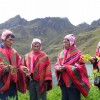
Elders in Peruvian Andes Help Interpret Climate Changes
A unique response to the challenge of global warming is happening in rural areas of Peru, where a network of indigenous elders is working out how to adjust weather forecasts in the light of climate change, while taking measures to safeguard their crops.
Peru – Megadiverse, and Biodiversity-Aware
One of every two Peruvians knows what "biodiversity" means, and most would stop buying products that are not socially or environmentally responsible, according to an international survey that for the first time included this megadiverse South American country.
Who Will Deal with the Thousands of Abandoned Oil Wells in Peru?
Peru has thousands of abandoned oil wells that continue to pollute their surroundings, with 269 considered to pose a serious hazard. But the government has yet to carry out an inventory in order to identify and subsequently clean up and seal them, despite a law passed in 2007 for this purpose.
More Transparent Forest Governance in Peruvian Amazon
In Peru, where over half of the national territory is covered by forests and the logging industry is marred by corruption, transparency and good forest management are closely linked.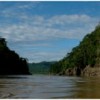
News Briefs – Tense Tug-of-War over Peru-Brazil Energy Agreement
LIMA, Mar 5 2012 (IPS) - Brazil is keen to move ahead quickly with the construction of hydropower plants in neighbouring countries to supply its demand for electricity. But Peru is still stalling on an agreement between the two countries, due to a number of conflicting interests and demands.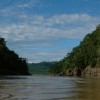
Tense Tug-of-War over Peru-Brazil Energy Agreement
Brazil is keen to move ahead quickly with the construction of hydropower plants in neighbouring countries to supply its demand for electricity. But Peru is still stalling on an agreement between the two countries, due to a number of conflicting interests and demands.« Previous Page — Next Page »


